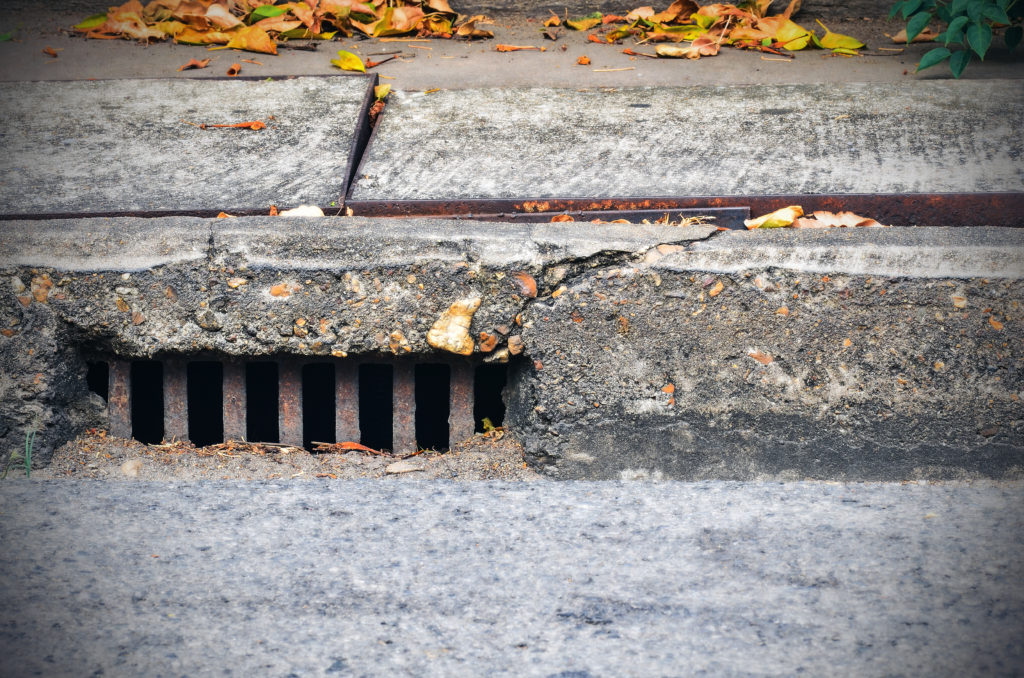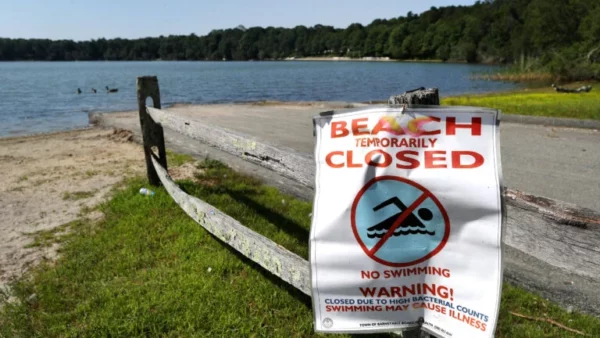
When rain falls on pavement instead of soil, it collects pollutants, like de-icing salts, oil, antifreeze, metals, and nutrients such as nitrogen and phosphorus, and carries them into our waterways. Photo: Shutterstock
Pollution from stormwater runoff is one of the biggest threats to clean water in New England. A new statewide rule could clean up Vermont’s waters by improving how we handle stormwater.
Stormwater runoff happens when rain falls on pavement rather than soil. Instead of being absorbed into the ground, it gains speed as it runs off, resulting in increased erosion and flood risks. It also collects pollutants, like de-icing salts, oil, antifreeze, metals, and nutrients such as nitrogen and phosphorus, and carries them into our waterways.
Vermont’s stormwater pollution is regulated through a permitting system, which tries to limit the harmful environmental impacts of this runoff. The state’s Department of Environmental Conservation gives out the permits, which control a variety of sources of stormwater pollution, from parking lots to back roads to farm fields. They require certain changes to the landscape so that – where feasible – the rain water seeps slowly into the soil or is stored temporarily in ponds on-site. This prevents water from rushing quickly off the watertight surface and carrying pollutants into nearby streams and lakes.
Strong Pollution Control Standards are Key to Cleaning Up Lake Champlain
Improving stormwater control is a main focus of the State’s Lake Champlain clean-up plan adopted in 2016. The goal is to expand and strengthen the permitting program so that less phosphorus runs into the Lake.
Last legislative session, lawmakers decreased the size of properties that need to apply for a stormwater permit. This is an important step: It means more of Vermont’s land will be regulated through the permitting process.
New State Permitting Rule Would Improve Stormwater Control
This fall, the state is taking another important step to reign in stormwater pollution by issuing a new permitting rule. The rule would streamline all state stormwater requirements into one place, giving landowners and developers a one-stop shop to determine whether they need a permit, how big to build a treatment system, and what type of filtering practice to use based on the features of their property. Importantly, the rule also puts a price tag on compliance, so that if property owners cannot meet the treatment standards due to site constraints, they can pay a fee that will go towards stormwater treatment elsewhere. This rule guides all stormwater control in the State, so every last detail can impact our waters. It’s important that the public weigh in – and that the state get it right.
The State released a draft of the rule over the summer, and CLF did a deep dive review to make sure the standards were stringent enough to meet our Lake Champlain clean-up goals, as well as other state water quality objectives. Our full comments are here. Read on for a summary of what we like and what can be improved about the new rule.
What We Like:
- It lays the groundwork for an important new retrofit permit. As part of the Lake Champlain clean-up plan, the State must adopt a new permit to regulate stormwater runoff from so-called “three-acre sites.” These are existing sites with three or more acres of surface that repels water – like large big box shopping centers. These properties will soon be required to retrofit their land with solutions like rain gardens and constructed wetlands that absorb and filter stormwater before it reaches waterways. No other state has adopted anything like this retrofit requirement.
- It ties stormwater regulation to the State’s watershed planning process. The new rule requires government officials to consider local watershed planning processes when setting standards. By accounting for watershed-level stormwater projects, the state will be able to make more accurate decisions about how to protect Vermont’s waterways.
What Could Be Improved:
- It creates a path for people to get a permit without ever applying. In its current form, the rule allows some stormwater discharges to be authorized without any permit application. This is a flawed system, because it doesn’t allow the public or state officials to review the proposed activity to ensure it complies with water quality laws.
- It doesn’t include a necessary waiting period between applying and discharging. This period of time is essential for the State to review the permit application for consistency with the law – and for the public to have time to provide comment. We suggest including a 30-day waiting period.
- It provides a loophole for large-scale animal farms. Stormwater runoff from farm fields is a major source of phosphorus and other pollutants into our waterways. The Environmental Protection Agency has specific federal rules to control stormwater runoff from these farms, but Vermont’s current proposed rule creates illegal exceptions from these regulations.
CLF generally supports the adoption of this rule. It lays the foundation for an important new retrofit permit that will significantly reduce phosphorus releases into Lake Champlain from urban runoff. And it consolidates a constellation of stormwater requirements into one rule.
However, our comment letter identifies a number of areas in the rule that need to be revised to align with the federal Clean Water Act or require more detail and clarity.
While the public comment period for this stormwater rule is closed, there will be an opportunity for the public to weigh in on the State’s draft of the three-acre retrofit permit, which will be released in the coming months. As these developments in stormwater regulation move forward, CLF will continue to provide analysis and let you know how you can help reduce harmful stormwater runoff to our treasured lakes and streams.



